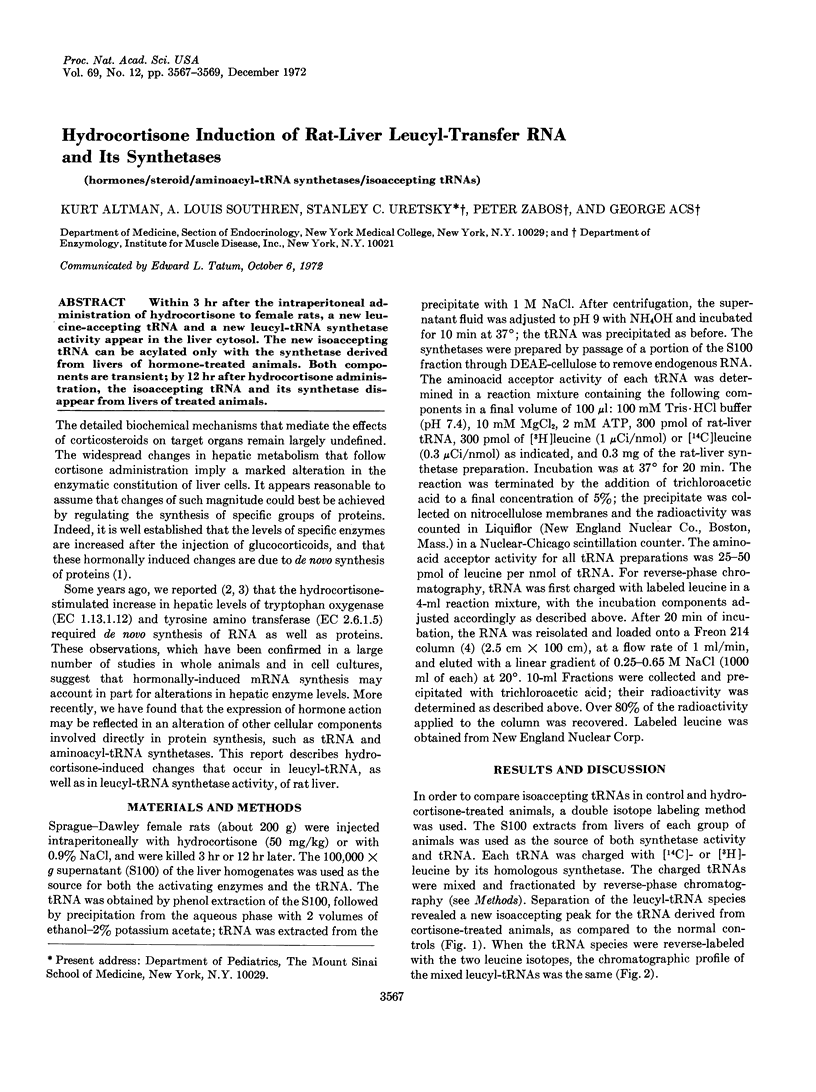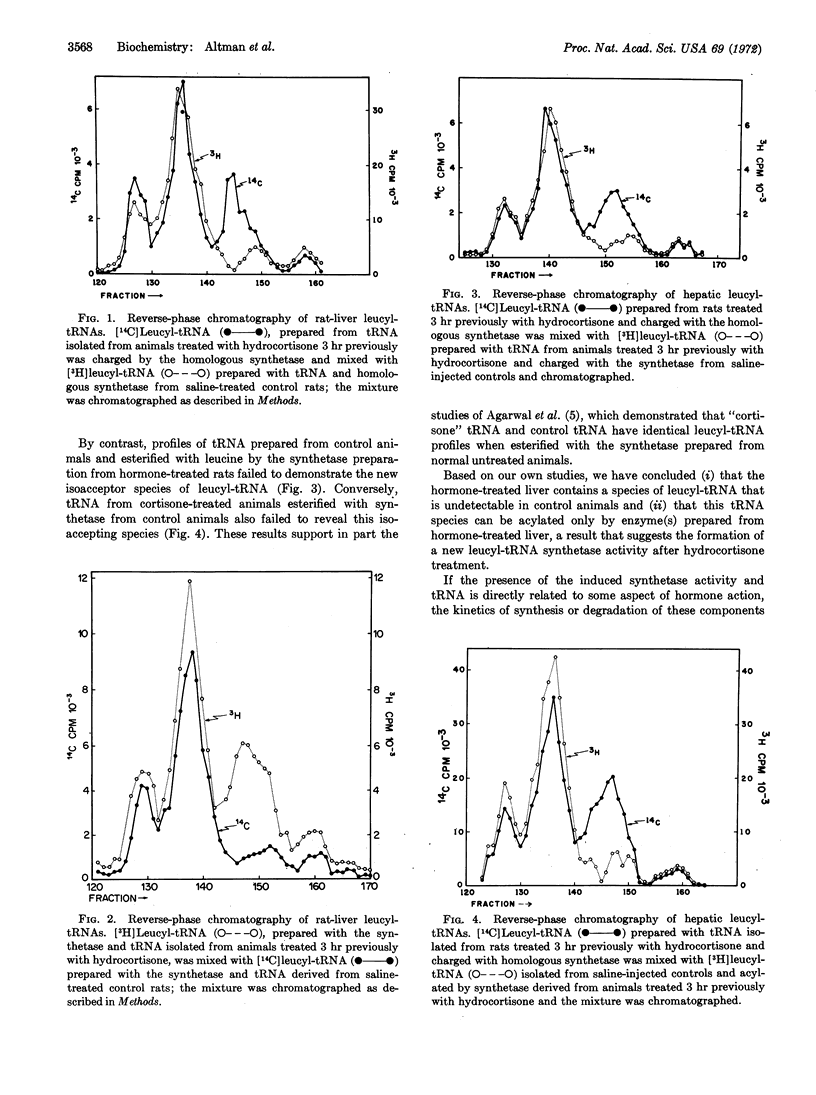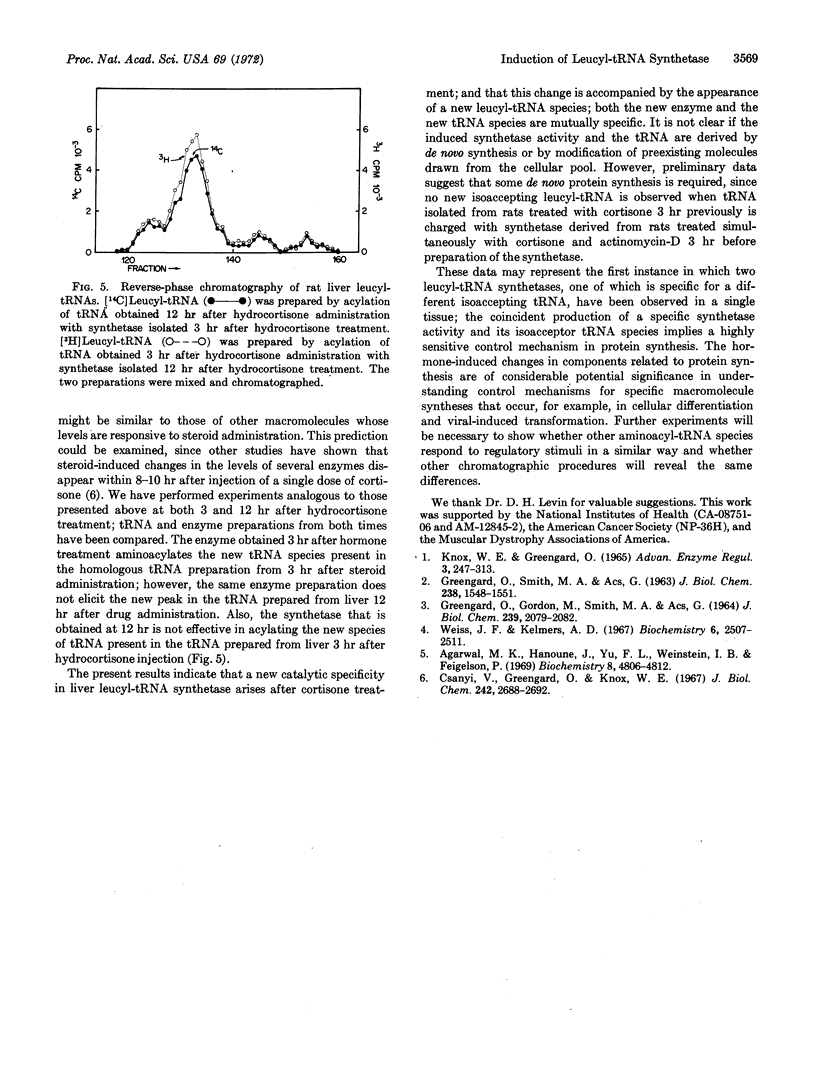Abstract
Within 3 hr after the intraperitoneal administration of hydrocortisone to female rats, a new leucine-accepting tRNA and a new leucyl-tRNA synthetase activity appear in the liver cytosol. The new isoaccepting tRNA can be acylated only with the synthetase derived from livers of hormone-treated animals. Both components are transient; by 12 hr after hydrocortisone administration, the isoaccepting tRNA and its synthetase disappear from livers of treated animals.
Keywords: hormones, steroid, aminoacyl-tRNA synthetases, isoaccepting tRNAs
Full text
PDF


Selected References
These references are in PubMed. This may not be the complete list of references from this article.
- Agarwal M. K., Hanoune J., Yu F. L., Weinstein I. B., Feigelson P. Studies on the effect of cortisone on rat liver transfer ribonucleic acid. Biochemistry. 1969 Dec;8(12):4806–4812. doi: 10.1021/bi00840a023. [DOI] [PubMed] [Google Scholar]
- GREENGARD O., GORDON M., SMITH M. A., ACS G. STUDIES ON THE MECHANISM OF DIETHYLSTILBESTROL-INDUCED FORMATION OF PHOSPHOPROTEIN IN MALE CHICKENS. J Biol Chem. 1964 Jun;239:2079–2082. [PubMed] [Google Scholar]
- GREENGARD O., SMITH M. A., ACS G. Relation of cortisone and synthesis of ribonucleic acid to induced and developmental enzyme formation. J Biol Chem. 1963 Apr;238:1548–1551. [PubMed] [Google Scholar]
- Weiss J. F., Kelmers A. D. A new chromatographic system for increased resolution of transfer ribonucleic acids. Biochemistry. 1967 Aug;6(8):2507–2513. doi: 10.1021/bi00860a030. [DOI] [PubMed] [Google Scholar]


